Our Gardens
The Old North Church & Historic Site is delighted to house multiple gardens on its campus as spaces for reflection, contemplation, and prayer.
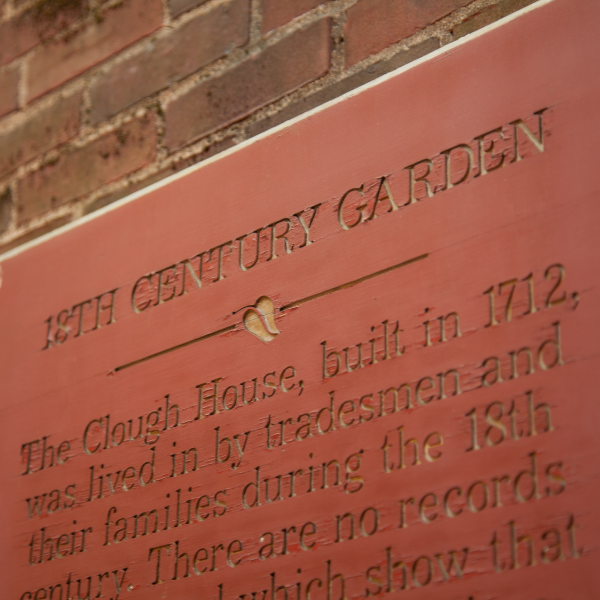
18th Century Garden
Located between the St. Francis of Assisi Garden and the Clough House toward the back of the church campus, the Old North Church Gardeners – members of the church’s congregation and North End neighbors – began this garden as a volunteer project in 1995. The plants and shrubs are such as were used in the late 18th century and are suitable for the partial shade and clay soil of this city setting. The Gardeners welcome the opportunity to display annuals and perennials from the 18th century, many of which are less commonly seen in public areas.
Be sure to take a moment to view this garden on your way from the Clough House to the Old North Church!
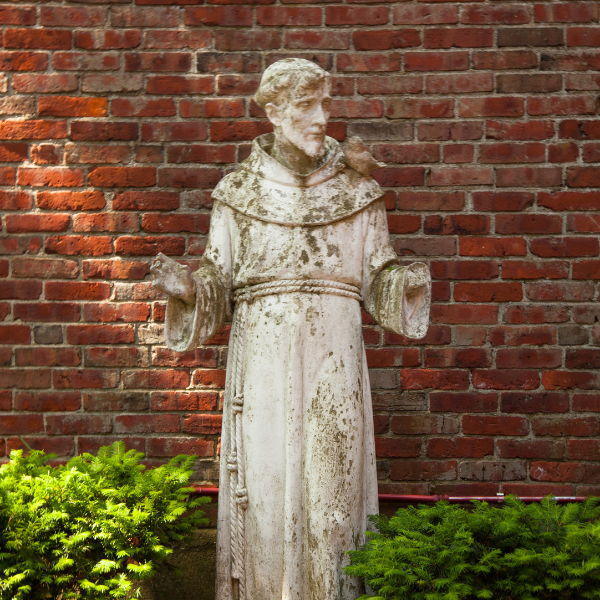
St. Francis of Assisi Garden
The Chapel of St. Francis was built to meet the needs of Italian immigrants who belonged to the Waldensian Reform movement. Following the dispersal of this small community, this building found new use as the Old North Church Gift Shop. The St. Francis Garden evolved in the 1970s to remember the Waldensian presence and to commemorate the links between the 1723 church and the 1918 chapel.
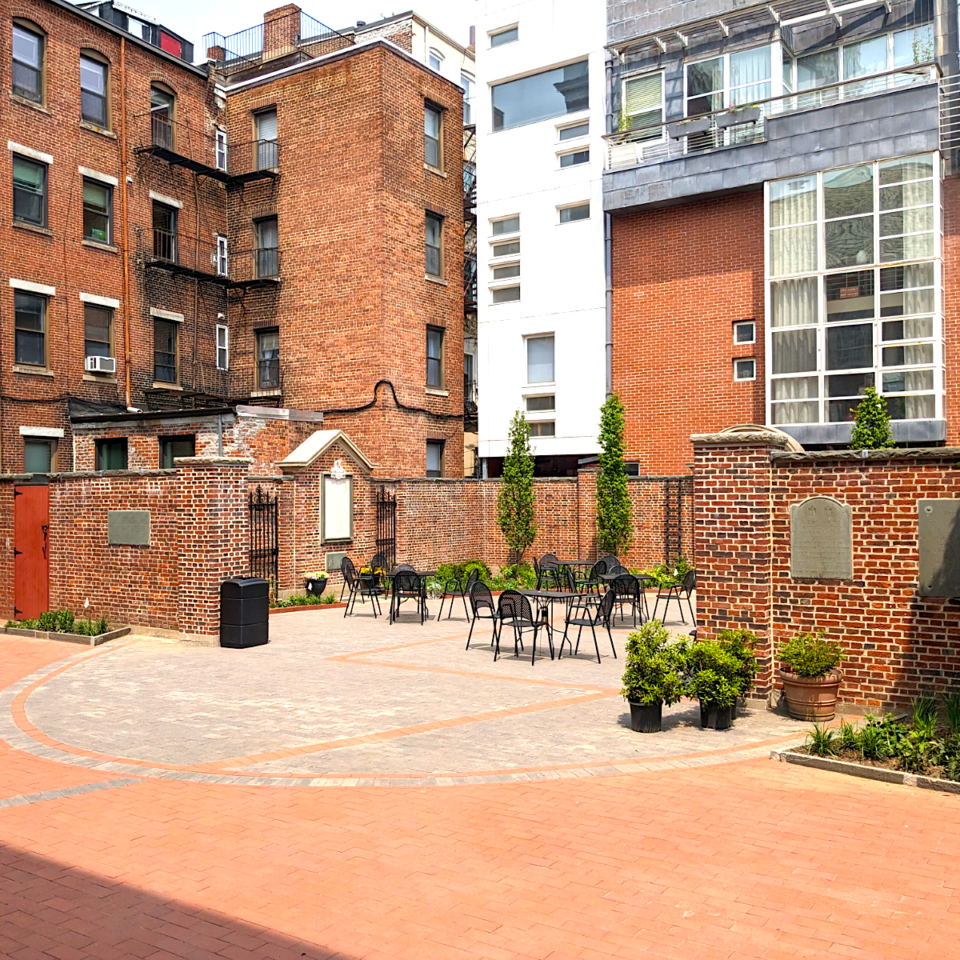
Washington Memorial Garden & Courtyard
The Washington Memorial Garden & Courtyard on the north side of the church is a popular respite spot for those walking the Freedom Trail. Renovated in 2022, this charming greenspace has been cared for by the Beacon Hill Garden Club for many years. The space is multifunctional: perfect for presentations to visiting groups, wonderful for sitting and relaxing a bit while you enjoy the beautiful plantings, and a fun place to play outdoor games like cornhole or Connect Four.
In 2016 and 2017, the garden was excavated by Joe Bagley, the City Archaeologist of Boston. Read more about the findings from the dig.
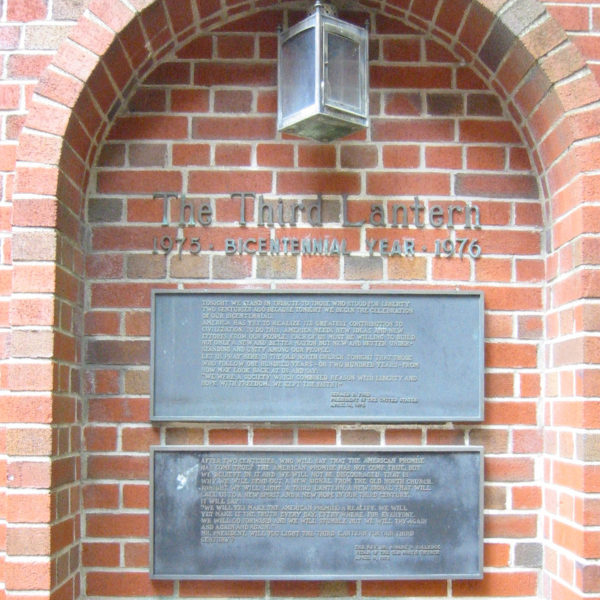
The Third Lantern Garden
The Third Lantern Garden, located outside the crypt on the north side of the church walls, offers abundant shade and features a commemorative fountain that was converted into a planter filled with stunning flowers. The garden provides an oasis to visitors during the summer heat or a contemplative spot on a colorful fall day. In the spring, visitors will enjoy a variety of blooms — including a riot of daffodils — courtesy of the Beacon Hill Garden Club.
Two centuries after the original signal lanterns on April 18, 1975, President Gerald Ford began the nation’s bicentennial celebration by lighting the “Third Lantern,” burning brightly inside the church on the right aisle in the Newman Window, as a signal to guide our country with hope and fortitude into our third century.
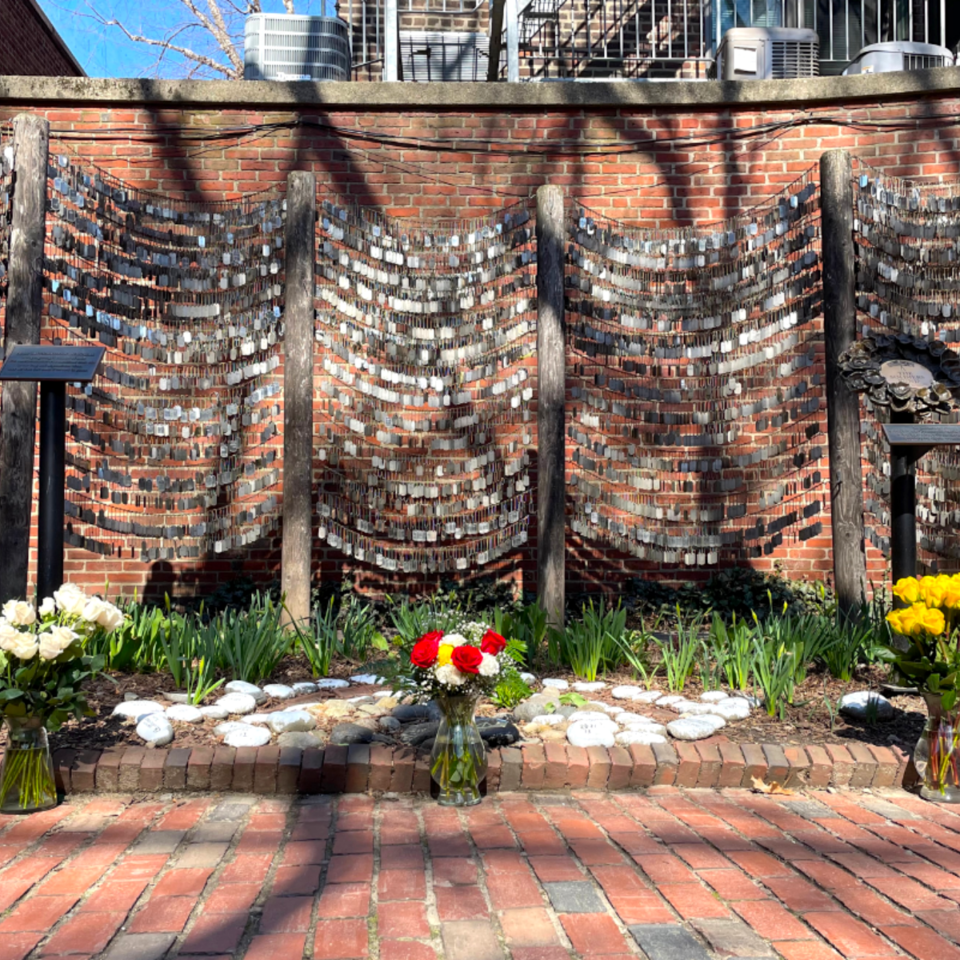
The Memorial Garden
In 2006, Old North Church and its neighbors created the nation’s first public memorial honoring American lives lost in the conflicts in Afghanistan, Iraq, and the greater war on terror. This memorial has evolved over time. The original design was much simpler. Individual wooden “popsicle stick” crosses and Stars of David were marked with individual soldiers’ names and then were glued to trellises. Very quickly, however, it became apparent that a more durable and permanent monument was needed, one that could reflect the escalating number of fallen service members. A committee of church members and neighbors conceived a design of blank dog tags (representing the number of fallen Americans) hung on chains strung between fenceposts. The posts would form a semi-circle with a small garden within the circle, and a walkway and meditation bench along the perimeter. Ground was broken mid-May of 2007 with the setting of the fence posts and walkway.
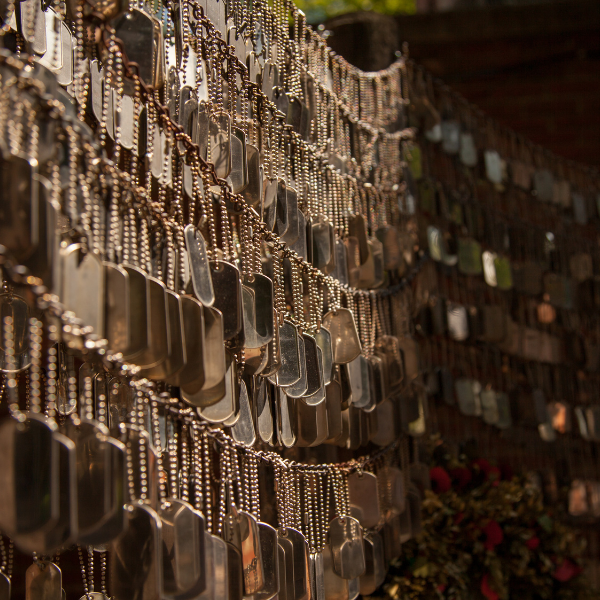
During the weekend prior to Memorial Day 2007, a table was set up and approximately 3,500 dog tags were strung with the assistance of visitors recruited as they walked through the courtyard. On Memorial Day, the Old North Memorial Garden was dedicated. In November 2018, a bronze plaque was added as well as a bronze poppy wreath to remember fallen British and Commonwealth soldiers. Today, whenever an American serviceperson is killed in these conflicts, a dog tag is hung by an Old North volunteer. The tags represent, as closely as possible, the total number of deaths. The thousands upon thousands of tags are a haunting reminder of the toll war takes on families and communities. Visitors are welcome to touch the dog tags respectfully, walk behind the memorial on the pathway, and take a moment to reflect and pray on the bench provided. They may notice, if the wind stirs, a light chime as the tags move against one another.
